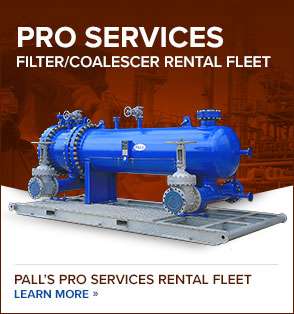Molecular Sieve Dehydration
Understanding the Molecular Sieve Dehydration Process
Molecular sieve dehydration process helps in drying natural gas by removing water from natural gas, prevents formation of gas hydrates and subsequent fouling of critical downstream components, reduces corrosion, maximizes pipeline and process efficiencies, and protects water sensitive catalysts in refinery processes. In desiccant operations, common adsorbent materials include molecular sieves, silica gels and activated alumina.
The wet hydrocarbon gas enters the top of the adsorption tower and flows downward through the adsorbent where the water is adsorbed. The essentially dry natural gas exits at the bottom and is ready for processing or sale. Most desiccant systems have two or more adsorption towers enabling one to be regenerated while the remaining tower(s) are in operation. Bed regeneration is accomplished by flowing heated dry gas upward so that contaminants adsorbed within the bed can be removed.
Protecting Molecular Sieve Desiccants from Free Water and Hydrocarbon Contamination
To maintain their effectiveness, desiccants must be protected from free water and liquid hydrocarbon contamination to achieve their anticipated 3 to 5 year life. Free water causes long term fracturing and dusting of the desiccant granules, while hydrocarbons burn onto the granules during regeneration, progressively reducing moisture removal capability.
Natural Gas Dehydration Plant Needs
- Achieve or exceed natural gas production quotas via reliable treatment of wet gases
- Maintain process reliability for consistency of production and minimization of downtime
- Provide consistent on-spec sales gas quality for water content
- Minimize desiccant bed degradation that can lead to premature water breakthrough
- Minimize pressure drop increase
Challenges and Solutions in Molecular Sieve Dehydration
| Challenge | Solution |
|---|---|
| Improve your adsorbent dehydration productivity and reliability with effective liquid and solid removal upstream of the desiccant beds to protect against bed degradation and capacity loss.
|
| Protect against introduction of traces or slugs of liquid by capturing the water upstream of the desiccant beds.
|
| Protect downstream equipment, such as compressors and catalyst beds through effective solids control downstream of the desiccant beds.
|
Natural Gas Dehydration Unit Process Flow Diagram
Key Application/Filter Recommendations For Molecular Sieve Dehydration (other applications not shown)
| Application | Pall Products | Customer Benefits |
|---|---|---|
Desiccant bed protection | Productivity, reliability, on-spec water content, and extended desiccant life via maintained dehydrator efficiency and capacity | |
Downstream protection | Downstream process reliability by elimination of adsorbent dust |
Experience Matters
Don’t take our word for it. Just ask the thousands of oil and gas engineers around the world why Pall is their supplier of choice for filtration and separations solutions. Let them tell you how our extended filter life and simple maintenance protocols save them time that can be spent on value-add process improvements. Ask them about the reliability and consistent output from the Pall systems installed in their critical processes. You don't want to spend time worrying about your filters and coalescers, and we don’t want you to either.
Contact Pall today and let us put our 50+ years of experience to work for you.
For more information on improving the efficiency of your processes, contact our team of filtration experts.
-
Adsorbent Dehydration
Download:
Our Products
Leading the Industry with product solutions that fit your customers needs.
Let’s find the right solution, together.
Let’s connect. We want to share our innovative filtration solutions with you today. Contact our knowledgeable subject matter experts for information on how we can help. Thank you and we look forward to assisting you shortly.

